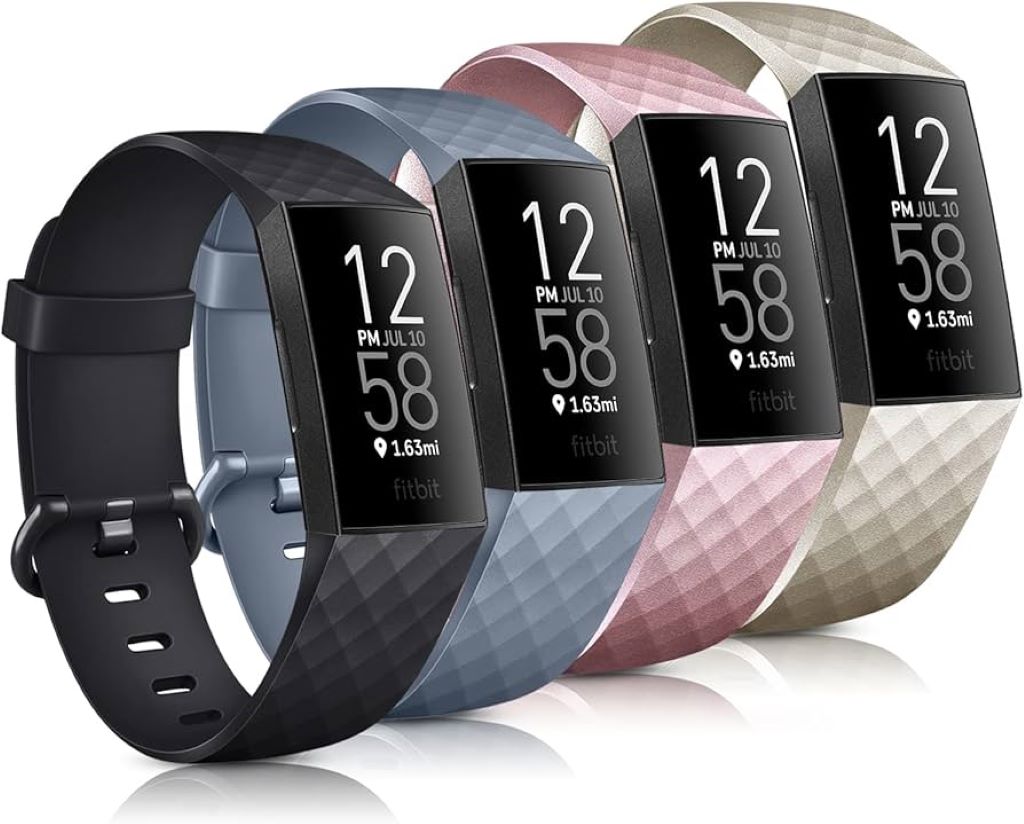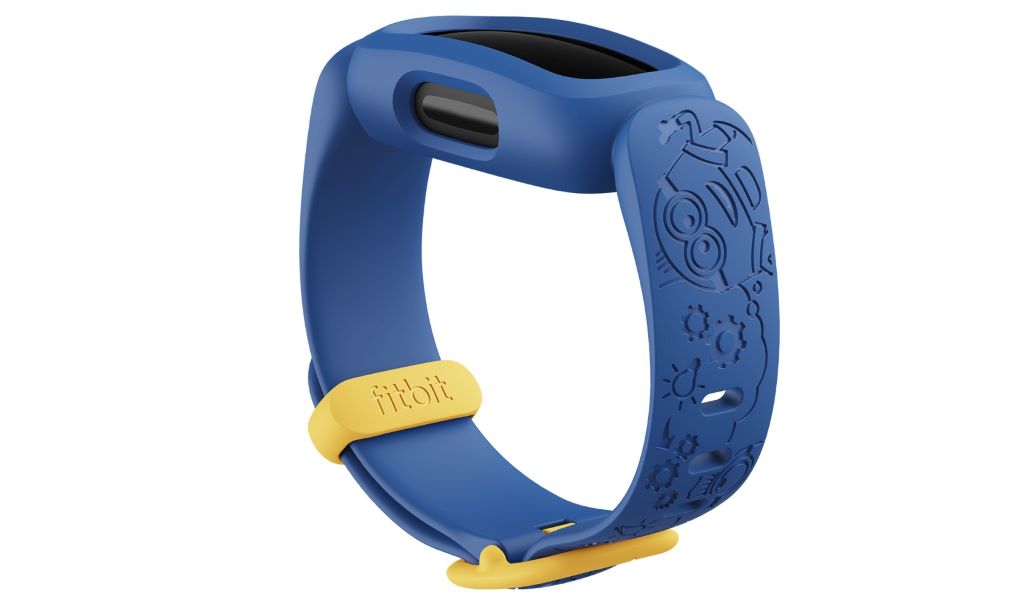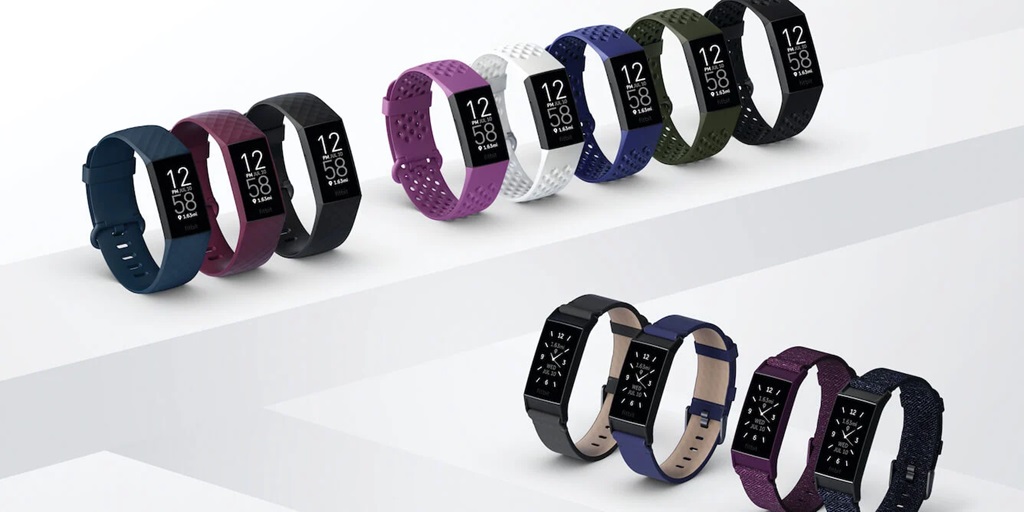
10 Dec How Many Fitbit Bands Are Available?
Fitbit revolutionized the wearable tech industry with the introduction of the first wireless activity tracker in 2007. In the years since, the company has broadened its product range to include an array of fitness trackers, smartwatches, and accessories. For those with technical expertise, it’s worth delving into the intricate details of Fitbit’s product lineup over the years to fully appreciate the extent of their innovation and progress. So, how many Fitbit bands are there in the market today? Let’s explore the technicalities and complexities of the product line to find out.
The Early Days: Fitbit Classic, Ultra, One, Zip, & Flex
In the early years, Fitbit offered just a handful of models focused on simple activity-tracking features like steps, distance, calories burned, and sleep tracking.
The first Fitbit device was the Fitbit Classic in 2009. Resembling a typical digital watch, it tracked steps, distance, calories, and sleep. Up next was the Fitbit Ultra in 2011, which added stair counting and more advanced sleep tracking.
2012 saw the release of three new models:
- Fitbit One: A tiny tracker that could be worn discreetly in a pocket or bra, with a display on the device to view your data.
- Fitbit Zip: A entry-level tracker in a clippable form factor with tap display functionality.
- Fitbit Flex: Fitbit’s first wrist-worn band with LED lights to indicate progress toward your daily goals.
In 2013, Fitbit released the Force, their first tracker with an OLED display screen. However, it was quickly recalled due to skin irritation reports.
Fitbit had found its stride, offering convenient wireless trackers in various form factors to suit different preferences. While they lacked advanced smartwatch features, their activity and sleep-tracking capabilities appealed to health-focused consumers.
Blazing Into Smartwatches: Fitbit Blaze, Ionic, & Versa
In 2016, Fitbit made its first foray into smartwatches with the Fitbit Blaze. Resembling a sporty smartwatch, it built on its activity tracking strengths and added smartphone notifications, music control, and basic smartwatch functions.
The Blaze was followed in 2017 by the Fitbit Ionic, their first official smartwatch with a full app store, mobile payments, and other smart features. The angular, box-shaped design wasn’t a huge hit, but the Ionic showed Fitbit was serious about competing in the smartwatch space.
In 2018, Fitbit struck gold with the release of the Fitbit Versa. The Versa delivered the smart features of the Ionic in a more appealing pebble-shaped design reminiscent of the Apple Watch. It became Fitbit’s most popular smartwatch yet, especially among women. They also released the Versa Lite Edition as a more affordable option.
Fitbit continued iterating on the Versa line with the Versa 2 in 2019, which added Alexa support, and the Sense in 2020 with advanced health sensors for stress and skin temperature.
Fitbit’s smartwatches proved they could hold their own against the Apple Watch, with strengths in activity tracking, sleep analysis, and an engaging app experience. The Versa line also appealed strongly to the female demographic, where Apple struggled.
Fitbit For All: Accessible Trackers Across Price Points
While chasing the smartwatch market, Fitbit was wise to keep offering trackers at lower price points to appeal to a wide range of consumers.
In 2018, they released the Fitbit Charge 3 with a swim-proof design, heart rate tracking, and OLED display. It became their new flagship fitness tracker.
For more budget-focused buyers, they offered the Inspire and Inspire HR in 2019. These slim, discreet trackers had basic activity features at an affordable price point.
Kids weren’t left out either – the Fitbit Ace 2 gave children a fun way to be active and get introduced to wearable tech.
Fitbit’s product tiers allowed buyers to choose the right device for their needs and budget, from the $99 Inspire to the $299 Sense smartwatch. This accessibility powered Fitbit’s rise to a 27% market share in wearables by 2021, second only to Apple.
Premium Features For Subscribers: Fitbit Premium
In 2019, Fitbit launched a subscription service called Fitbit Premium to complement their devices. For $9.99 per month, Premium subscribers gain insights into their activity, sleep, and health metrics through advanced analytics and coaching.
Premium takes Fitbit’s apps to the next level with personalized guidance on nutrition, mindset, managing conditions like diabetes or hypertension, and achieving health goals. Subscribers also gain access to guided programs for better sleep, weight loss, or running a 5K.
By creating an engaging subscription service, Fitbit seeks to keep users motivated long-term and build an ongoing relationship beyond just selling a device. Premium integration gives their smartwatches and trackers a unique advantage in user experience.
Pushing Into Healthcare: The Fitbit Health Solutions Platform
With their wealth of health data from over 120 million active users, Fitbit has major opportunities in the digital healthcare space.
In 2021, they launched Fitbit Health Solutions – a HIPAA-compliant platform that allows healthcare providers to offer Fitbit devices and access insights from the user’s Fitbit data. Having this integrated data enables more personalized care and remote patient monitoring.
Fitbit is partnering with major providers like Humana and Blue Cross Blue Shield to integrate Health Solutions into wellness programs, weight management, diabetes care, chronic disease management.
Pushing into healthcare provides recurring revenue streams beyond consumer sales and firmly positions Fitbit devices as clinical health tools. It’s a smart evolution of their brand as the wearables landscape gets increasingly competitive.
Where Are They Now? Fitbit In 2022
After over 15 years in the wearables space, Fitbit offers an impressive lineup of over 13 smartwatches, fitness bands, and trackers. Recent releases include:
- Fitbit Charge 5: Their newest flagship tracker with built-in GPS, diabetes management features, and a color touchscreen.
- Fitbit Luxe: A fashion-focused slim tracker and wellness band aimed at the female demographic
- Fitbit Inspire 3: The latest in their affordable, entry-level tracker lineup
- Fitbit Versa 4: An upgraded Versa 3 with new exercise and health features
- Fitbit Sense 2: Their most advanced health-focused smartwatch with stress management, sleep analysis, heart health features, and more
In 2022, Fitbit devices run on the Fitbit OS, offering 6+ days of battery life and compatibility across their product lineup. Popular features include detailed sleep tracking, Active ZoneMinutes to track exercise intensity, and a Premium subscription for enhanced analytics.
Fitbit continues to offer the most diverse range of wearable options at various price points. Their acquisition by Google in 2021 will allow greater integration with Android phones and Google services going forward. With innovative health partnerships and compelling new devices like the Sense 2 still being released, Fitbit shows no signs of slowing down its wearable innovation.
Fitbit’s Product Lineup Over The Years
Here’s a high-level overview of major Fitbit devices released over the years, from their first tracker in 2009 to today:
- 2009: Fitbit Classic
- 2011: Fitbit Ultra
- 2012: Fitbit One, Fitbit Zip, Fitbit Flex
- 2014: Fitbit Charge, Fitbit Charge HR
- 2015: Fitbit Surge, Fitbit Alta
- 2016: Fitbit Alta HR, Fitbit Blaze
- 2017: Fitbit Charge 2, Fitbit Ionic, Fitbit Flyer
- 2018: Fitbit Versa, Fitbit Ace, Fitbit Charge 3
- 2019: Fitbit Inspire, Fitbit Versa Lite, Fitbit Versa 2
- 2020: Fitbit Charge 4, Fitbit Sense
- 2021: Fitbit Luxe, Fitbit Charge 5
- 2022: Fitbit Inspire 3, Fitbit Versa 4, Fitbit Sense 2
They’ve come a long way from the original digital pedometer! Along the way, standouts include the Ionic as their first smartwatch, the Charge as their bestselling tracker, and the Versa as their most popular smartwatch line.
Fitbit’s continual innovation across over 13 different product lines has made it a powerhouse in wearables.
5 Key Factors Driving Fitbit’s Product Diversity
Behind the scenes, what factors have allowed Fitbit to offer such a wide range of wearables effectively targeting various consumer segments?
- Iterative Improvements
Fitbit is skilled at gradually improving on each product generation. Subtle upgrades like adding heart rate tracking, swimproof designs, or color touchscreens keep the devices fresh each year.
- Acquisitions
Acquiring tech startups like Vector, Twine Health, Coin, FitStar, and Doki has allowed Fitbit to expand their capabilities into smartwatches, software services, kids’ products, and more.
- Consumer Research
Fitbit spends time researching consumers to identify unmet needs. For example, the Luxe band targeted women wanting a fitness tracker with fashionable styling.
- Partnerships
Collaborating with brands like Adidas, Gucci, and Starbucks on special edition products expands their appeal and reach.
- Variable Pricing
Offering devices at price points ranging from $99 to $299 allows each customer to find their sweet spot. Accessibility is a key strength.
Through honing these strategies, Fitbit has delivered true product diversity unmatched by competitors.
Comparing Fitbit to Other Leading Wearable Brands
How does Fitbit’s product selection compare to the other major players in today’s wearable tech landscape? Let’s size them up:
Apple Watch: Offers 6 smartwatch models ranging from $329-$799. Limited to a single wearable type focused on high-end consumers.
Samsung Galaxy Watch: Approximately 8 smartwatch models from $189-$469. Offers more size options than Apple but still a fairly narrow range.
Garmin: Huge range of over 50 smartwatches and fitness trackers from $99-$999. But very specialized for athletes and lacks more mainstream options.
Huawei Band: Basic fitness trackers under $100 aimed at lower-budget consumers. Lacks advanced health tracking or smartwatch options.
Amazfit: Around 15 affordably priced smartwatch and tracker models from $45-$200. It has a good budget range but is not as feature-rich as Fitbit.
Overall, Fitbit strikes the best balance, offering health-focused wearables with a wide variety of prices and features. They appeal to casual everyday users yet also pack advanced capabilities rivaling premium smartwatches. This broad accessibility is why Fitbit continues to be the wearable brand that average consumers gravitate to.
5 Factors Driving Demand for Fitbit Devices
Beyond just their product diversity, what key factors make Fitbit wearables appeal to millions of users?
- Health Tracking
Fitbit devices go far beyond steps and calories to provide holistic health data like heart rate, sleep stages, SpO2, skin temperature, and breathing rate.
- Fitbit App
The intuitive companion app and Fitbit Premium service create an engaging experience and provide coaching insights.
- Battery Life
Getting 5-7 days of battery life reduces hassle compared to Apple Watch models that need nightly charging.
- Brand Reputation
As the most recognized wearable brand, Fitbit benefits from strong positive brand associations with health and fitness.
- Motivational Features
From goal celebrations to challenges and rewards, Fitbit devices are designed to nudge you toward better wellness habits.
For consumers seeking more complete health insights beyond basic activity tracking, Fitbit delivers the most compelling package at each price tier.
What Does the Future Hold for Fitbit?
Fitbit now sits in a prime position after over 15 years of maturing into a versatile, mass-market wearable brand. Where does the brand go from here?
More Advanced Health Sensors – Additional metrics like blood glucose, blood pressure, and atrial fibrillation detection seem likely future additions.
Expanded Smartwatch Capabilities – Expect closer integration with Android and iOS apps for a more seamless experience.
Partnerships With Healthcare Providers – Business use cases will expand as providers tap health insights from Fitbit devices.
New Form Factors – Products like smart rings, smart glasses, or health patches could complement Fitbit’s existing lineup.
Special Editions and Collaborations – Partnering with fashion brands, celebrities, or franchises will keep products fresh.
Premium Service Enhancements – Coaching insights and programs will continue improving to fuel recurring subscription revenue.
While the competitive landscape intensifies from Apple, Google, and others, Fitbit is in a strong position with their versatile product mix, healthcare opportunities, and loyal user base. As Google’s deep pockets fuel future innovation, Fitbit still has enormous potential to track towards.
FAQs
Q: How accurate are Fitbit devices?
A: Independent studies found Fitbit trackers and watches to provide over 90% accuracy on metrics like steps, distance, calories, and heart rate compared to research devices. They’re among the most accurate consumer wearable brands.
Q: Which Fitbit has the longest battery life?
A: The Fitbit Charge family offers the best battery life, around 5-7 days between charges. The Sense and Versa lines last around 5 days on a charge.
Q: Are Fitbit bands interchangeable?
A: Many tracker models like the Luxe, Charge, or Inspire allow you to swap out bands in various colors and materials to match your style. Premium bands are $20-$50.
Q: What smartphone platforms do Fitbit devices work with?
A: Fitbit wearables sync seamlessly to both iOS and Android phones through the Fitbit app. They also work independently if you don’t connect to a phone.
Q: Are Fitbit devices waterproof?
A: Many models are now swimproof with 5ATM water resistance rating. These include the Charge 5, Luxe, Sense 2, Versa 4, Inspire 3 and newer. But earlier models may lack water resistance.
Conclusion
Ever since bursting onto the wearable scene in 2009, Fitbit has set themselves apart with an incredibly diverse product lineup spanning over 13 different tracker and smartwatch models.
Key to their success has been offering the right devices at accessible price points for all demographics, along with a compelling software and subscription ecosystem. Their acquisition by Google opens exciting possibilities for even deeper integration with Android.
Bellabeat vs. Fitbit: Comparing fitness trackers for your lifestyle. While Apple may lead in pure smartwatch sales, Fitbit continues to dominate as the preferred holistic health wearable brand for regular consumers. Their combination of wide-ranging products, motivational software features, and health insights keep users engaged long-term, making it a compelling choice when considering fitness trackers.
With healthcare partnerships, innovative sensors, and likely expansion into new form factors, Fitbit’s product diversity seems destined to keep growing. Their legacy of making wearable technology friendly, helpful, and personalized for the everyday user means Fitbit likely still has its best days ahead.





